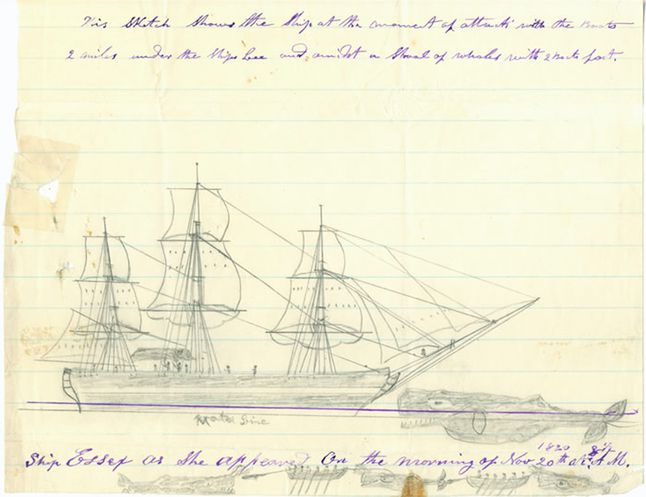Resource Library
this day in geographic history
Nov 20, 1820 CE: Tragedy of the Whaleship Essex
On November 20, 1820, the American whaling ship Essex was rammed by a sperm whale and sunk. The incident inspired Herman Melville’s famous novel Moby Dick.
Grades
4 - 12+
Subjects
Social Studies, U.S. History, World History
Contents
1 Image
Saved by 6 educators
Attack on the Essex
The sinking of the Essex, a whaling ship out of Nantucket, Massachusetts, was the inspiration for Herman Melville's Moby Dick.
Illustration by Thomas Nickerson, courtesy the Nantucket Historical Association

On November 20, 1820, the American whaling ship Essex was rammed by a sperm whale (Physeter macrocephalus) and sunk. The incident inspired Herman Melville’s famous novel Moby Dick.
The Essex had left her home port on the island
of Nantucket, Massachusetts, United States, more than a year earlier.
Nantucket and the mainland Massachusetts town of New Bedford were the
whaling capitals of the world, sending out hundreds of ships and sailors
across the ocean every year.
Whaling was a lucrative business. Sperm whales, the species sought by the Essex and most other whalers of the time, were valued for both their blubber and waxy oil found in their huge heads. These substances were refined into oils that were used in candles, cosmetics, and lubricants for machinery. Whaling fleets had radically reduced sperm whale populations in the Atlantic Ocean, and the Essex had planned on a two-and-a-half year voyage to the rich “whaling grounds” of the South Pacific.
On November 20, the Essex encountered a pod of whales, and her small whaleboats set off to harpoon
the animals and tow them back to the ship for processing. After
harpooning one whale, the small, open whaleboat was pulled by the giant
animal in what was nicknamed a “Nantucket sleigh ride.”
As her captain watched from on deck, the Essex herself—238 tons, 27 meters (87 feet)—was forcefully, purposefully rammed by an enormous
sperm whale separated from the pod. There was nothing the crew could do
about it—the animal was bigger, stronger, and had much, much greater agility than the ship. The ship sank, leaving 20 or 21 survivors in three leaky whaleboats.
The survivors were more than 1,900 kilometers (1,200 miles) from the nearest islands (the Marquesas), without adequate food or freshwater. The boats were separated and most men resorted to cannibalism before being rescued months later. Of the 20 or 21 crew members who left Nantucket, eight survived. Most likely, so did the whale.
Search the resource library
resources
for all grades
in any subject

